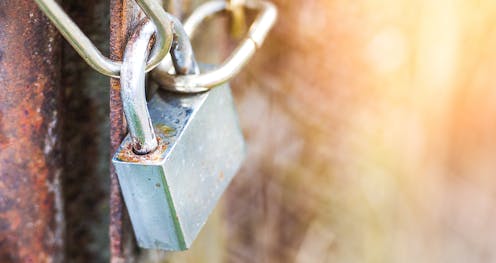What can benefit-cost analysis tell us?
- Written by John Quiggin, Professor, School of Economics, The University of Queensland

Lockdowns work. That’s the evidence from many different countries now, including Australia. To be more precise, lockdowns reduce the effective reproductive rate of the virus to the point where it is below 1, meaning that, on average, each infected person passes on the disease to less than one other person.
As long as this is sustained, the number of new cases will keep declining, as we have now seen. Potentially, as has been claimed to be the case in China, the number of cases will approach zero.
It now seems clear that the best strategy is (near) eradication, pushing the number of infections down to (or near) zero, and preventing any resurgence.
As has just been suggested by Health Minister Greg Hunt[1], it’s time to think about relaxing controls.
But when can we start, and which controls should be relaxed?
It’s benefits versus costs
These are questions which will need collaboration between epidemiologists, economists and other social scientists.
The problem is essentially one of benefit cost analysis: which measures can be relaxed at least cost in terms of increased reproduction rates relative to the benefits that relaxation will generate.
The epidemiologists have the expertise to answer the first question (as well as it can be answered with very limited evidence). Economists and social scientists have the expertise to answer the second.
The ideal case would come if we could confirm the virus had been wiped out completely in Australia (or in a particular state).
Read more: Eradicating the COVID-19 coronavirus is also the best economic strategy[2]
Then, provided all new arrivals were subject to strict quarantine, we could drop all the restrictions except those that made sense for other reasons (encouraging/requiring hand washing is an obvious example).
But that’s unlikely to happen soon.
In the absence of comprehensive testing, even if counted new cases fall to zero, it’s hard to be sure that there aren’t any uncounted cases. And it will be some time before new cases reach zero.
So, we need to consider which restrictions we should lift, subject to the constraint that the reproduction rate is still below one, meaning that any undetected outbreaks will ultimately fizzle out. The first step is to identify the restrictions that impose the greatest cost for the least benefit in terms of reducing reproduction.
Which restrictions can go first?
The worst risks of spreading the disease come when large numbers of unrelated people are together in close proximity for a long time. Cruise ships represent an extreme case, where nearly everyone can get infected. Sporting matches and mass meetings are less extreme but still dangerous examples.
But at least on the anecdotal and intuitive evidence we have available, the most burdensome social restrictions are those that prevent gatherings involving modest numbers of family and close friends. Such gatherings post a much smaller risk than those of larger groups with more dispersed social networks.
Not only are the numbers small, but if other contacts are limited, any initial infection may be confined to a relatively small group.
Read more: Can I visit my boyfriend or my parents? Go fishing or bushwalking? Coronavirus rules in Western Australia[3]
Given the big benefits from relaxing these restrictions and the low cost in terms of disease reproduction, these seem like obvious candidates for early easing.
Turning to economic activity, the costs of restricting an activity involving personal contact depend critically on the availability of remote-delivery substitutes.
Most obviously, office work of all kinds can be done remotely. Costs associated with lower efficiency and more goofing off are offset by the reduction in commuting costs. It’s entirely possible that the benefit to workers who place a high weight on commuting costs outweighs the cost to bosses who find supervision more difficult (and colleagues who enjoy social contact at work).
Read more: Remote work amid the coronavirus pandemic: 3 solutions[4]
Conversely, as has been pointed out with a good deal of derision, there is no way of doing a haircut from 1.5 metres away. That wasn’t a good reason for excluding them from the lockdown (haircuts can easily be deferred after all) but it makes them a good candidate for subsequent relaxation.
The other key issue is that of option value[5].
If a decision can be easily reversed, at relatively low cost, it has an “option value” relative to a decision that is effectively irreversible. That’s why it made sense to lock down early, rather than waiting to see if the virus spread.
School closures provide an example where option values are relevant. If we reopen the schools it will be costly to close them again.
Read more: Australian schools are closing because of coronavirus, but should they be?[6]
So, before reopening schools, we need to make sure that all the necessary facilities for handwashing and other health measures are in place, and that there is enough testing to detect infections before they spread.
One final point. Apart from lockdowns, the one thing that has been shown to work well is testing. The more people we can test, the faster we learn about possible outbreaks and more closely restrictions can be matched to the threat level.
References
- ^ Greg Hunt (www.theaustralian.com.au)
- ^ Eradicating the COVID-19 coronavirus is also the best economic strategy (theconversation.com)
- ^ Can I visit my boyfriend or my parents? Go fishing or bushwalking? Coronavirus rules in Western Australia (theconversation.com)
- ^ Remote work amid the coronavirus pandemic: 3 solutions (theconversation.com)
- ^ option value (johnquiggin.com)
- ^ Australian schools are closing because of coronavirus, but should they be? (theconversation.com)
Authors: John Quiggin, Professor, School of Economics, The University of Queensland
Read more https://theconversation.com/unlocking-australia-what-can-benefit-cost-analysis-tell-us-136233







